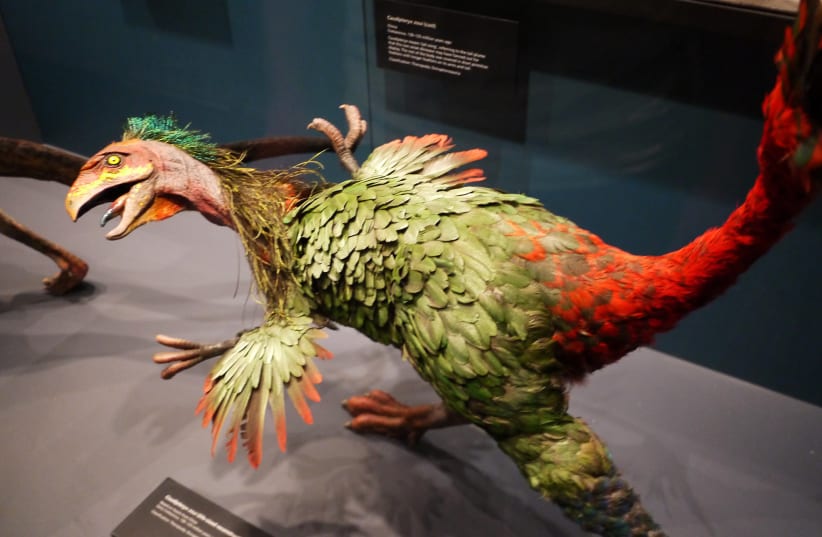Dinosaurs and birds wouldn’t seem to have much in common except for the fact that both creatures reproduce by laying eggs. Most dinos died out about 66 million years ago, but but we’re still learning new things about them on a regular basis. Some museums exhibit fossils that show that many dinosaurs, in fact, did have feathers on both their arms and their legs, unlike birds. The first feathered dinosaur was dug up in northeastern China in 1996.
Since then, feathered dinosaurs have been found in Canada, Brazil, and other parts of the world. Some of them were even able to fly thanks to their feathers, but others flew like bats or flying squirrels. Most paleontologists believe that the earliest feathers evolved for some form of thermoregulation – to help keep the animals warm.
Now, experts in Seoul, South Korea, suggest that small dinosaurs that ate both plants and animals as well as insects may have flapped small, feathered primitive wings to scare prey out of hiding places. The team just published their findings in the journal Scientific Reports under the title “Escape behaviors in prey and the evolution of plumage in dinosaurs.” It was written by Jinseok Park, Hyungpil Moon, Yuong-Nam Lee, Sang-im Lee, Piotr Jablonski, and colleagues.
The authors actually built a robot dinosaur named Robopteryx to investigate how grasshoppers responded to different potential scaring behaviors and suggested that the results could help explain why feathered wings evolved before they were capable of flight in some types of dinosaurs. They modeled it on the size, shape, and estimated movement range of the dinosaur Caudipteryx – a two-legged, peacock-sized predator that lived about 124 million years ago.
Although the remains of numerous species of feathered dinosaurs have been discovered, so far only members of one group of dinosaurs known as Pennaraptora have been discovered with pennaceous feathers –the type of feathers required for flight. Fossils show that these developed first on small primitive or proto-wings that were not strong enough for flight and whose functions are currently unknown.
They then used Robopteryx to imitate several variations of flush-pursuit display behaviors – with the full sequence consisting of spreading the proto-wings and raising a tail, pausing with them outstretched, then folding them back – and observed the behavioral response of grasshoppers to the display behavior. Grasshoppers were used as they respond to flush-pursuit display behavior and belong to the order Orthoptera that existed concurrently with Caudipteryx.
The authors found significant positive links between the use of the proto-wings in the display behavior and both the likelihood of the grasshopper fleeing, with 93% of tested grasshoppers fleeing when the proto-wings were used compared to 47% without, and how far away Robopteryx was when they fled. They also found significant associations between both the presence of white patches on the proto-wings and the presence of feathers on the tail and the likelihood of the grasshopper fleeing.
The authors conclude that their results with Robopteryx support the flush-pursuit hypothesis and provide a new perspective on why feathered wings and tails may have initially evolved in dinosaurs.
